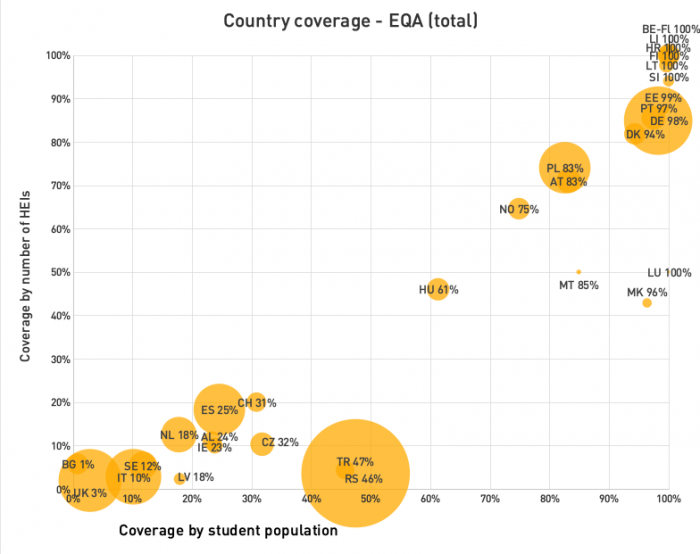
ESG Coverage of Higher Education Systems in Europe
Policy Brief
In the context of the DEQAR CONNECT project, EQAR committed to prepare a number of policy briefs based on the analysis of the data collected through DEQAR. The policy briefs are Europe-wide, country specific and domain based reports on topics following Bologna Thematic Peer Groups’ priorities.
The first of these has been published and delves into the external quality assurance frameworks and their alignment with the ESG (Standards and Guidelines for Quality Assurance in the European Higher Education Area). The innovative aspect of this analysis is that it has been done by extracting and combining two different datasets i.e. of DEQAR and of the European Tertiary Education Register (ETER).
Together, they have helped provide an extensive picture on the coverage of higher education institutions and their student population by DEQAR. The analysis also captures the diverse and evolving nature of external QA frameworks in Europe, reflecting on the aim and focus of such processes (at institutional and programme level, see above figure), on the frequency of such procedures (validity of reports) and the commonalities and differences of higher education systems, illustrated by bubble plots.
- Download the analysis “ESG Coverage of Higher Education Systems in Europe” (PDF)
- Find out more about the DEQAR CONNECT project

The ETER and DEQAR database together form a veritable treasure cave of information, with ETER containing information on Higher Education Institutions in Europe (basic characteristics, educational activities, staff, finances and research activities etc.) and DEQAR the external QA results and reports of EQAR-registered agencies. The reference year for ETER data is 2015, and it covers the student population enrolled in an ISCED 5-7 level. The reference year for DEQAR is May 2021.
Accessing this treasure cave can not (yet) be done with the voice command “Open Sesame”, but is still remarkably easy (see “download DEQAR data with one click” and Search ETER). Analysing these data is of course considerable more work, but yielded fascinating results, even taking into consideration that both databases are still a work in progress; as in that all potential data have not (yet) been submitted. Once that has been finalised, the roof of the cave will disintegrate and the sky will be the limit!